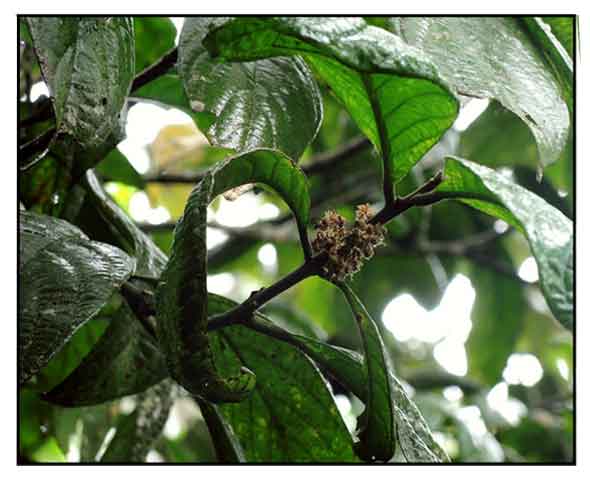
Family • Symplocaceae
Bangkunai
Agosip
Symplocos fasciculata Zoll.
JIREK
| Scientific names | Common names |
| Dicalix tinctorius Blume | Agosip (Phil.) |
| Eugenioides fasciculatum Kuntze | Bangkunai (P. Bis.) |
| Serjania tinctoria Sandifort | Himamaliu (Phil.) |
| Symplocos fasciculata Zoll. | |
| Symplocos fasciculata var. blumeana Koord. & Valeton | |
| Symplocos fasciculata var. minor Miq. | |
| Symplocos phanerophlebia Merr. | |
| Symplocos fasciculata Zoll. is an accepted name. KEW: Plants of the World Online | |
| Other vernacular names |
| BRUNEI: Giak, Girak, Gumiting puteh, Jirah, Jirak, Labah, Leboh, Loboh, Njam-njam, Pachal ambok. |
| INDONESIA: Jirak (Sundanese), Jirek (Javanese), Kayu loba-loba (Sumatra), Sasah. |
| MALAYSIA: Merpadi paya, Nasi-nasi, Pokok lukut (Peninsular), Kerenang, Menasi. |
| SUMATRA: Djarak bulau, Djirok, Kekatja, Lelebah, Pipi udan, Lebomelukut, Hapu-hapu, Havu-havu. |
| THAILAND: Muet. |
| VIETNAME: Dung. |
November 2022
![]()
 |
| PHOTOS / ILLUSTRATIONS |
| IMAGE SOURCE: Photo: Symplocos fasciculata Zoll. / Michael Kesi / CC by NC / click on image to go to source page / BioLib |
Additional
Sources and Suggested Readings |
• |
DOI: It is not uncommon for links on studies/sources to change. Copying and pasting the information on the search window or using the DOI (if available) will often redirect to the new link page. (Citing and Using a (DOI) Digital Object Identifier) |
| List of Understudied Philippine Medicinal Plants |
• |
 |


